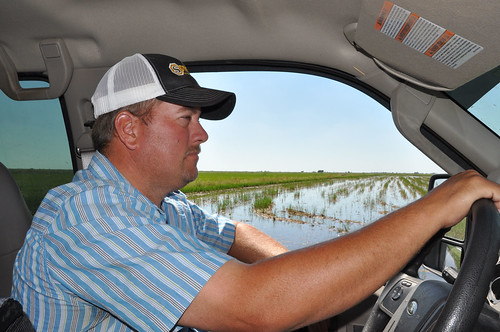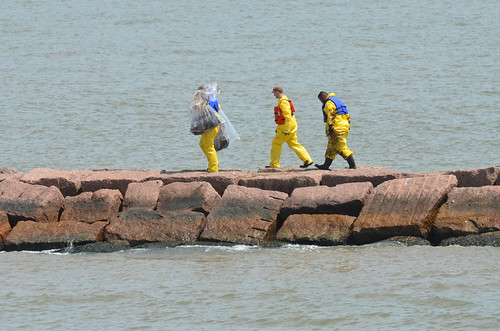
When 168,000 gallons of oil was reported to be spilled this spring into Texas’ Houston Ship Channel because of a collision between a barge and tanker, it was a reminder of the vulnerability of the Gulf of Mexico’s coastal wildlife and habitats.
The spill served to highlight the continued need for vigilance and proactive approaches in caring for the treasured Gulf Coast region. USDA’s Natural Resources Conservation Service (NRCS), is one federal agency working everyday with coastal landowners, farmers and ranchers on conservation efforts aimed at protecting, restoring and enhancing vital coastal resources and bird populations.
“The reality that disasters will occur from time to time is a good example of why conservation programs are important to protecting our resource base,” said David Manthei, NRCS district conservationist in Anahuac, Texas. “Whether it be drought, impending flood waters, storm damage, an oil spill or even just day-to-day farming operations, NRCS has programs in place that can assist landowners in protecting and preserving the natural resources.”
NRCS’ Environmental Quality Incentives Program is one such Farm Bill program that offers technical and financial assistance opportunities for landowners that are aimed at wildlife and their habitats.
Taylor Wilcox is one rice farmer that Manthei has worked closely with over the years. For generations, Wilcox’s family has farmed rice and raised cattle in the coastal counties of Chambers and Jefferson. In fact, some of his Chambers County rice fields are only 12 miles from the state’s upper Gulf shoreline, in turn making his lands part of the migratory waterfowl and shorebird flyway zone.

Wilcox showed his stewardship commitment to migratory bird populations and the Gulf region when he enrolled about 1,600 acres into NRCS’ Migratory Bird Habitat Initiative, which was a proactive response to the historic 2010 Deepwater Horizon oil spill. NRCS offered coastal rice farmers financial assistance toward the costs of flooding fallow rice fields in an effort to provide migratory bird populations additional areas for resting, roosting and feeding before their arrival to the Gulf.
“Rice stubble is the perfect environment. The levies are there, and from a bird’s eye view, they can see the water,” Wilcox said. “Since we did that we did see an increase in our bird populations. Was it because of that? I’m not sure. We do have to attribute some of that success to the initiative.”
Adds Manthei: “Fallow fields can provide excellent wildlife habitat. The only limit is in regards to the farmer’s need to utilize that area for farming purposes. A host of practices can be employed in these areas to provide habitat for either wetland or upland wildlife species.”
Manthei pointed out that sustainable conservation practices like these prove critically beneficial during a time of crisis such as an oil spill.
“Private landowners are important stewards to the Gulf Coast. They ultimately will decide what does or does not happen on their land and this includes the implementation of conservation-friendly activities,” Manthei said.


